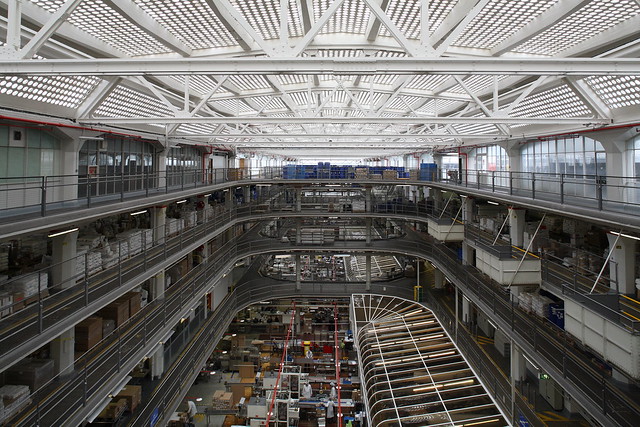
photo thanks to : npg
When it was officially opened in 1933 Building D10 (Packed Wet Goods) of the Boots Pharmaceutical Factory in Beeston, Nottingham, was one of the world’s first reinforced concrete buildings. Back then American-owned and influenced, it is still a true celebration of just how good concrete can be.
During his lifetime Williams was a prolific structural designer, who came to fame when he worked as chief engineer on the British Empire Exhibition of 1923, forming a successful partnership with architect Maxwell Ayrton to design the largest ever exhibition, attracting 27 million visitors (!) and earning him a knighthood in 1924. Although only ever intended to be temporary, two of Williams’ buildings that survived were later renamed into the more familiar Wembley Stadium (formerly Empire Stadium – sadly demolished in 2002) and Wembley Arena (formerly Empire Pool).
Between 1924 and 1930 Williams’ concrete designs included : Findhorn, Crubenmore, Carr, Spey & Montrose Bridges in Scotland; Wansford and Wakefield Bridges in England; and the Wadham Road and Lea Valley Viaducts (both in England).
His hugely successful contribution to British transport made him a natural choice in post-war Britain to work on the UK Motorway system, in particular the first 53.5 miles of the M1 (1959) and all 130 underbridges and overbridges that cross it.
More famously he worked on the Dorchester Hotel, London (1931) and the Daily Express Building, Manchester (1939), but it was the work on Building D10 that will be most remembered in architectural circles. Still the largest Grade 1 listed industrial building in Britain, its four stories of deliberately emphasized, reinforced concrete slabs on set back mushroom-headed columns were almost entirely clad in 5 acres of continuous ribbons of Crittall glazing. This enabled huge amounts of natural light straight into 2 large packing hall atriums – unheard of in an industrial Britain still caught in an architectural quandary, uncertain and afraid of whether to stick or twist from its traditional national heritage.
Interestingly D10 is considered a Masterpiece of the Modern Movement. However, whilst Corb & co were designing nice white boxes in central Europe, the relatively lesser-known Williams took a lesson out of American factory building and gave Britain one of its bravest ever buildings, cutting through indecision and caution on an unprecedented scale. We should be forever thankful to a great man, who brought Britain kicking and screaming into the Modern Age.
by Darren Maddison

photo thanks to : imagesofengland

photo thanks to : crittallwindows

photo thanks to : industryinform

photo thanks to : Steve Cadman

ReplyDeleteThis building has a very aesthetic and peculiar architecture, I like how it looks.
______________________
visit Stabilit America